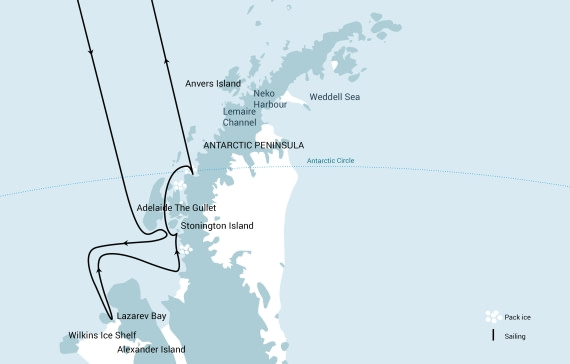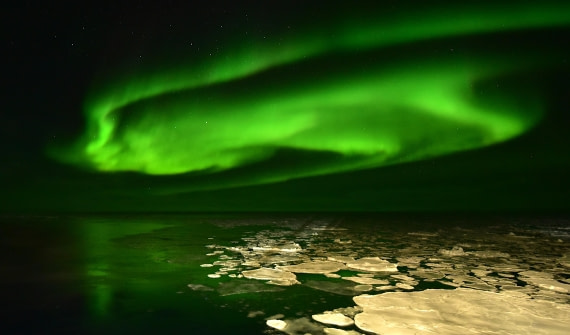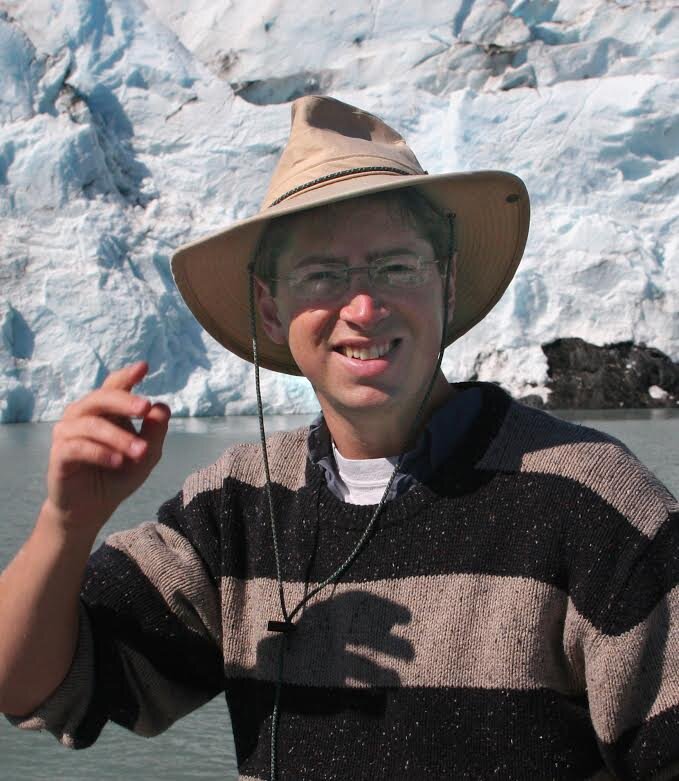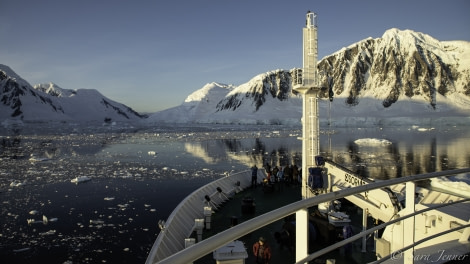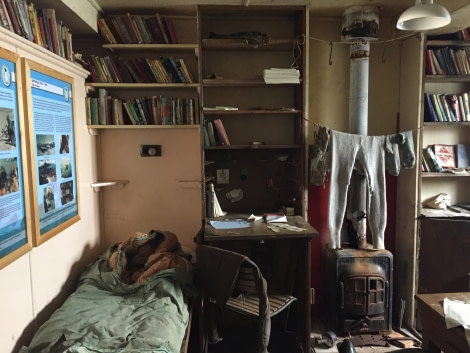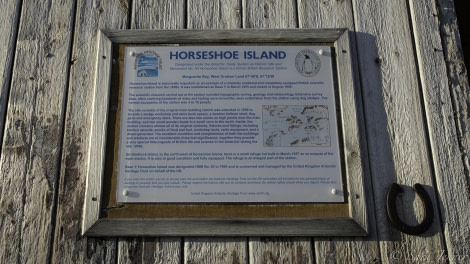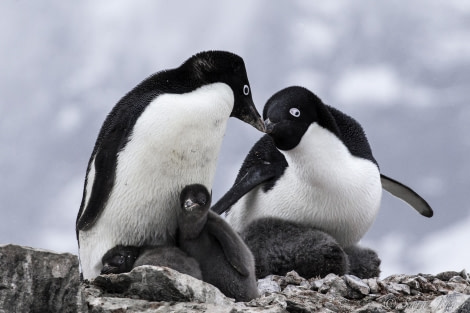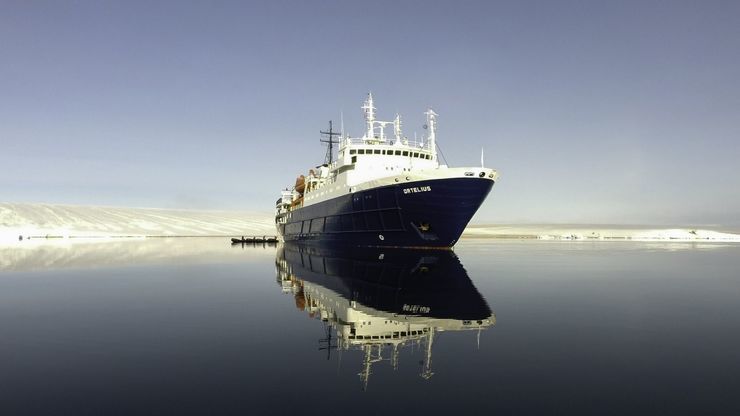Antarctica: Beyond the Polar Circle aboard Ortelius
A cruise in Antarctica always offers unique adventures, but some journeys bring profoundly moving moments that leave indelible memories for those who experience them. For those seeking an extraordinary adventure, Oceanwide Expeditions provides the opportunity to embark on a voyage to explore the southern lights, with an astronomer on board.
This journey with Oceanwide Expeditions will unveil a series of historically significant Antarctic areas, such as the rare Bellingshausen Sea, Marguerite Bay, and Alexander Island. These locations were discovered during Adrien De Gerlache’s Belgian Antarctic expedition (1897-1899) and Jean-Baptiste Charcot’s French Antarctic expedition (1904-07). Most notably, this one-of-a-kind voyage will take advantage of longer periods of darkness and darker skies to admire the aurora australis.
The m/v Ortelius will depart from Ushuaia, heading straight beyond the Antarctic Circle, where wild nature reigns and few other places on Earth are so untouched. Here, one can marvel at the Antarctic ice shelves, including the Wilkins Ice Shelf, along with a variety of exotic wildlife such as humpback and minke whales, orcas, and an array of seals like the leopard seal, elephant seal, crabeater seal, Weddell seal, Antarctic fur seal, as well as bird species like Gentoo and Adélie penguins, skuas, and giant petrels.
Antartide – Oceanwide Expeditions
Antartide – Oceanwide Expeditions 1
The best time to see the rare aurora australis, also known as the southern lights, will be in the spring of 2025. Unlike the northern lights, the southern aurora does not pass over cities or villages and is rarely visible from land. For this reason, Dr. Tyler Nordgren, professor of astronomy and physics at the University of Redlands and former board member of the International Dark Sky Association, will lead night sky observation sessions on board when the weather and auroras are favorable to fully enjoy the beauty of this exceptional phenomenon. There will also be opportunities to see many stars and celestial objects from the southern hemisphere, including the Southern Cross and the Magellanic Clouds.
dott. Tyler Nordgren
Dr. Julie Rathbun, a senior scientist at the Planetary Science Institute who is part of NASA’s Europa Clipper mission, will continue the polar and astronomical exploration theme, leading discussions on how Antarctica is used as a site to study Europa, one of Jupiter’s moons.
The cruise will begin in Ushuaia, Argentina, considered the southernmost city on the planet because it is located at the southern tip of South America, and nicknamed “The End of the World.” The journey will continue sailing along the Beagle Channel, surrounded by mountains, for the remainder of the evening.
The next two days will be dedicated to crossing the Drake Passage, experiencing the same sensations felt by the great polar explorers who first ventured into these regions: fresh salty breezes, rough seas, and possibly even a fin whale spouting sea spray. After passing the Antarctic Convergence, the natural boundary of Antarctica formed when cold waters flowing north collide with warmer sub-Antarctic seas, the circum-Antarctic upwelling zone will be reached. Here, both marine and bird life changes.
On the afternoon of the fourth day, the Antarctic Peninsula will come into view. If sea ice allows, the journey will continue through Pendleton Strait in an attempt to land on the rarely visited southern tip of Renaud Island. Here, one can admire the first Adélie penguins of the trip and enjoy spectacular views of icebergs in a surreal snowy landscape. The natural spectacle of Crystal Sound will be worth staying awake for, to see orcas, humpback whales, and minke whales.
The Gullet
Inside Station W, Detaille Island, Antarctic
The following day, Detaille Island will be explored, home to an abandoned British research station, where the island’s elevated position provides commanding views of the glaciers. Then, the voyage will proceed through The Gullet, one of the most impressive narrow channels in Antarctica, with towering mountains on either side.
Pourquoi Pas, a rocky beach with the mighty Moider Glacier in the background, will be the next visit. Discovered and mapped by the famous explorer Charcot, it offers a striking view while Antarctic fur seals relax behind the beach. After lunch, Ortelius will head to Horseshoe Island, named for its distinctive shape. Here, an abandoned research station gives insight into the life of early scientific explorers, featuring original artifacts from that pioneering era.
Horseshoe Island
Antartide – Oceanwide Expeditions5
Four days will be devoted to exploring the Antarctic ice shelves (George VI and Wilkins). Here, the vastness of these immense cliffs and expanses of ice can be admired, provided the ice and weather conditions permit. Upon reaching Jenny Island, the cruise will shift focus, offering beaches, hanging glaciers, and moss-covered landscapes, along with wildlife such as terns, skuas, elephant seals, leopard seals, and Adélie penguins.
The next stop will be Lagoon Island, the northernmost of the Leonie Islands, also discovered and mapped by Jean-Baptiste Charcot. This low-lying island will offer gently sloping beaches and flat areas to explore. Wildlife will vary depending on the snow cover, and if there is little snow, the terrain will have an almost desert-like appearance. Near the Mikkelsen Islands, there will be a spectacular Zodiac cruise with the possibility of encountering up to five species of Antarctic seals. The last day will be dedicated to the return through the Drake Passage, with disembarkation the following day in Ushuaia.
This spectacular Oceanwide Expeditions exploration includes a package with all land excursions and activities during the Zodiac trips, along with a program of lectures by renowned naturalists, guidance from experienced expedition staff, and complimentary use of rubber boots and snowshoes during visits.
Keep following us on Cruising Journal for updates and news from the cruise world, with photos, videos, and special offers.

